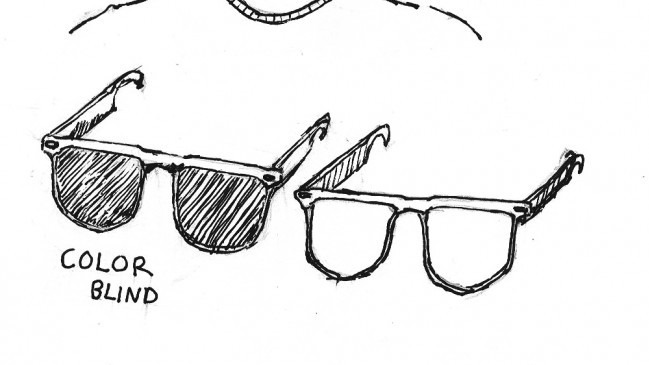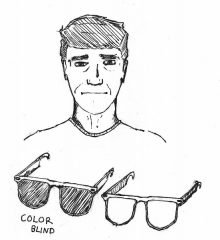By EMMA KISSANE – Managing Editor
I am not racist; I view, speak to, interact with and love everyone the same, regardless of race.
Although it may seem like being “colorblind” is the right way to be, it turns out that being able to accept the realities of our differences is truly what we should strive for.
Since I was young, I have felt like I’ve had an assignment, from my family, teachers and schoolmates, to move past all sorts of judgment and racism. Theoretically, I have always gladly accepted this test.
The truth is that my resolute decision to guard my brain and heart from all racism and stereotyping has been challenged again and again. Particularly during the past two years, I have been continually struck by incidents which pushed me to think about the way my peers and I perceive each other.
“Y’all sisters?” she blurted out as we waited on the hot rubber track.
She had been casually scrutinizing the two of us for the past few minutes, switching between looking down at her running shoes, glancing over at my pale face where I was sitting on the grass and then passing her vision over the fair features of Jenny, who was stretching farther down the track.
I answered with a casual laugh, a shake of my head.
“No, why, ‘cause we’re both white?” I teasingly inquired.
“No…” she faltered. “Y’all both have green eyes. I wasn’t trying to be racist!”
The moment was only vaguely uncomfortable, and shortly afterwards we began the next drill. It’s never been mentioned again. But it was a more than familiar feeling, and it stuck with me.
Last year, Jenny and I were two of only three white girls running short distance track. Even though the question bothered me, it was not because I was personally offended. I was bothered by how unsurprised I was to hear it.
Those experiences got me thinking; race is always the first filter with which we shade our judgmental eyes.
It is easy to forget that many people outside of communities like CCHS, and even some within, are not as accepting of interracial friendships.
Last summer, I attended a week-long camp and instantly befriended a group of five girls, none of whom were white. We clicked, but I felt the unabashed stares and heard the blatant whispers of other campers, and even adult counselors, questioning the friendship that was not at all foreign to me, but maybe seemed out of place to them.
Near the end of the week, a counselor deliberately singled out one of my friends as a troublemaker during a class, even though I was sitting next to her and also causing a commotion. I knew that was unfair, and I made sure my new friends knew how I felt because I didn’t want them to think I would agree with the treatment they had received.
I’ve discovered that I am sometimes afraid people might take one look at me and think I am racist because I am white, so right from the start, I have to prove to them that I am not.
The first time I ever had a straightforward discussion about racial issues with people outside of my family and close friends was during a class on the role of African-Americans males in cinema at the Governor’s Honors Program, a four-week summer enrichment program held annually at Valdosta State University in Valdosta, Ga. Our conversation strayed from movies to general race issues we had noticed in our own lives. We all identified with the expectation many students build for their peers to be a certain kind of student, based on their race.
This theme recently spawned a much more in-depth discussion within the Clarke County School District community.
Twice a year, CCHS, in conjunction with the University of Georgia, hosts a “Dinner Dialogue” to discuss social issues affecting students and teachers. This April, we read a book titled Reversing Underachievement among Gifted Black Students, by Dr. Donna Ford.
Ford paced the monochrome carpet, walking up and down wide aisles between the rows of her attentive listeners.
“Why are messages received in a way not intended? Because you’re so uncomfortable (discussing race),” Dr. Ford said. “It’s not just that minority kids have to be bicultural — white kids have to be bicultural, as well. You have to be comfortable in both of those worlds. It’s about learning how to code switch.”
Referencing scholar Lisa Delpit, Ford encouraged abandoning our “colorblindness,” to respond directly to our peers’ and students’ cultural differences. Everyone in the room nodded their head automatically. But I had the uncomfortable realization that this was the first time I could remember being explicitly told to treat people differently, to act differently depending on who I was with — based on their race.
We worry about offending others, and we worry about revealing ugly thoughts that we maybe never knew or accepted that we have inside. But, the bottom line is we have to start by acknowledging and then changing the observations we make about each other.
I know I will never stop trying to be the most accepting person I can be– I could never settle for less. In the distant future, when I teach in a classroom of my own, I hope I can give the same helping hand and understanding heart to all of my students.
If we hold ourselves to one standard with some, we must hold ourselves to that standard with all. But it will take all of us to make those collective steps towards both appreciating and celebrating our cultural differences, and also towards simply loving each other, as human beings.

